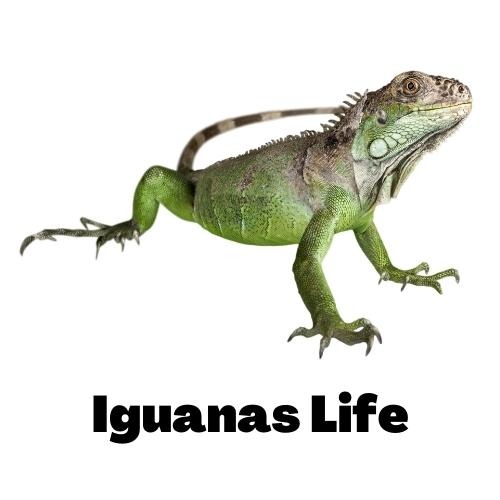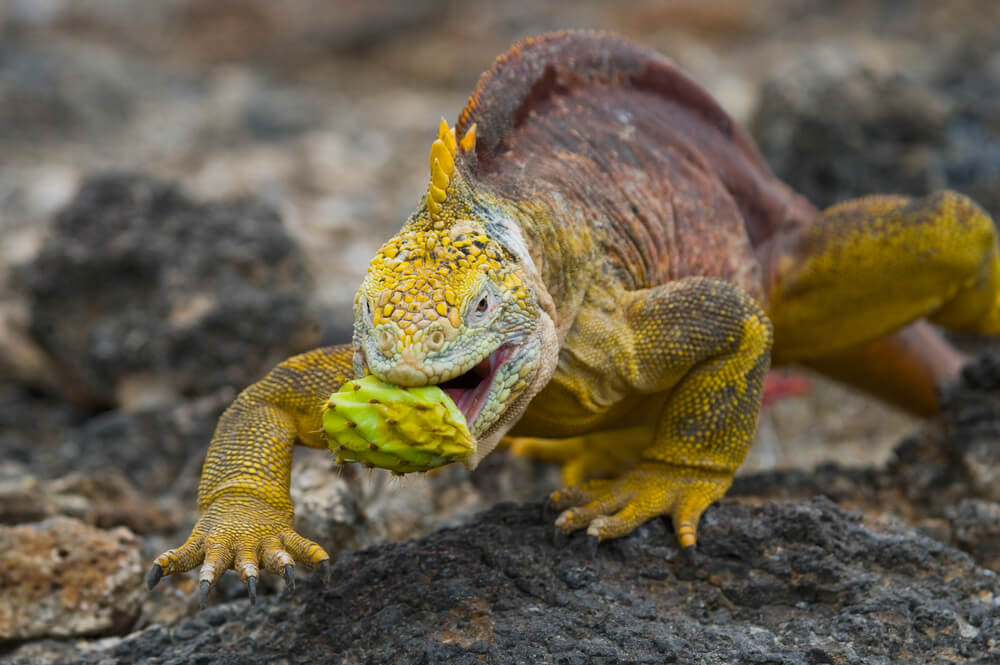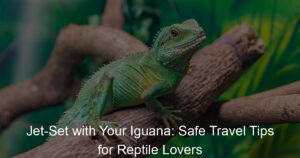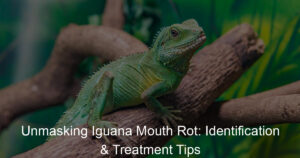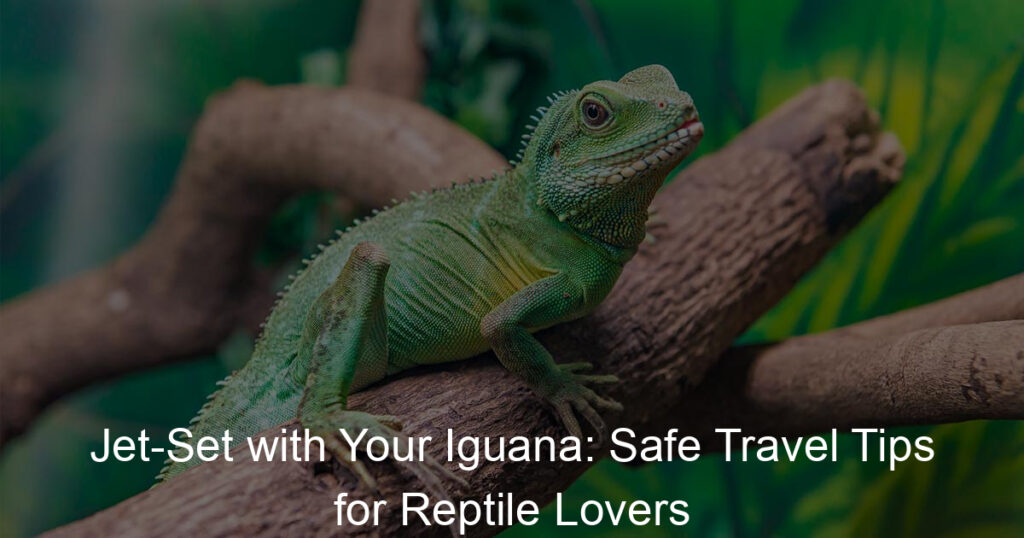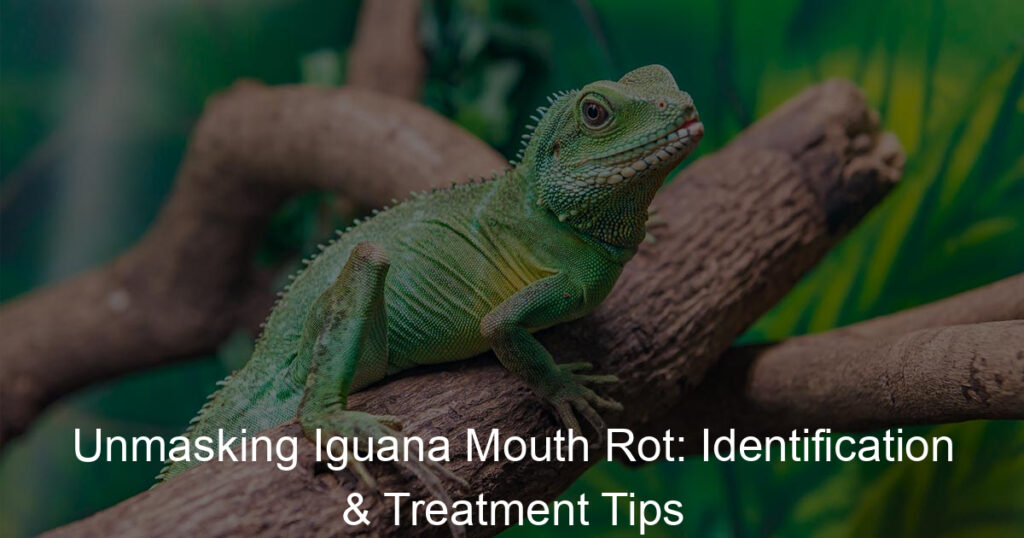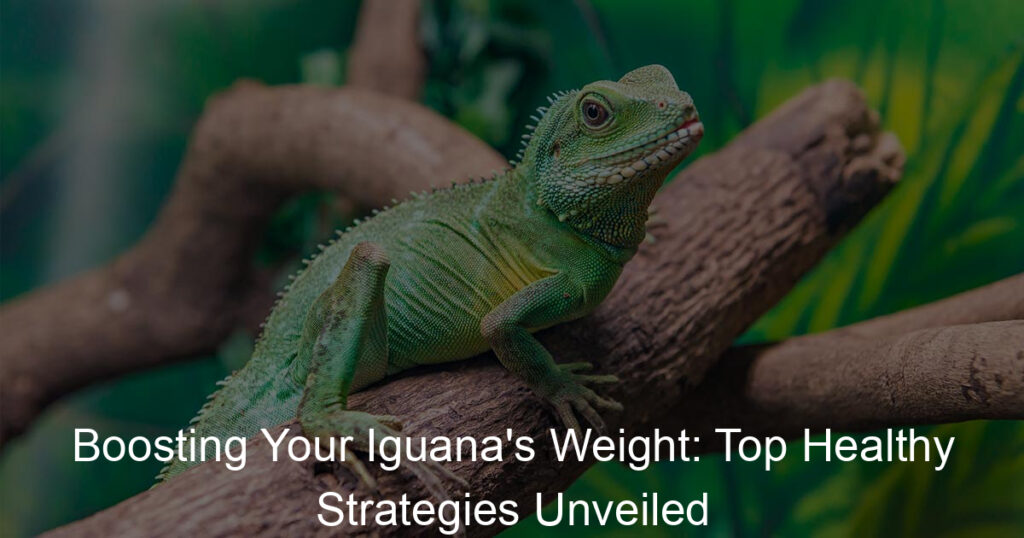The iguana is a large lizard native to tropical and subtropical regions of Central and South America. It is also known as the common iguana or green iguana.
The adult iguana can grow up to 6 feet in length and weigh up to 20 pounds. The skin of the iguana is green with black spots, which helps it blend in with its natural environment.
The diet of an iguana in the wild consists mainly of vegetation, such as leaves, flowers, and fruits.
They will also eat insects, small mammals, and reptiles. In captivity, iguanas should be fed a diet that includes vegetables, fruits, and high-quality commercial iguana food pellets.
Iguanas need to drink water daily, and a water dish should be available at all times.
Iguanas are diurnal animals, meaning they are active during the day. They spend most of their time in trees, where they bask in the sun and search for food.
Iguanas are good swimmers and can hold their breath for up to 30 minutes. When they feel threatened, they may drop from a great height into the water to escape predators.
In its natural habitat, the iguana plays an important role in controlling populations of insects and other small animals. Additionally, the iguana is a source of food for many predators such as snakes, birds of prey, and wildcats.
What Foods Are Toxic to Iguanas?
Iguanas are naturally curious and will sample just about anything they come across.
Unfortunately, many common household items and foods are toxic to iguanas and can make them very sick. Some of the most common toxins include:
Avocados: The leaves, fruit, seeds, and bark of avocados contain a compound called persin, which is toxic to iguanas. Symptoms of avocado toxicity include vomiting, diarrhea, lethargy, and difficulty breathing.
Chocolate: Chocolate contains a substance called theobromine, which is toxic to iguanas (and many other animals). The symptoms of chocolate toxicity include vomiting, diarrhea, tremors, seizures, and heart arrhythmias.
Citrus fruits: Citrus fruits, such as oranges and lemons, contain a compound called limonene, which is toxic to iguanas. Symptoms of citrus toxicity include vomiting, diarrhea, and skin irritation.
Onions: Onions contain a substance called thiosulphate, which is toxic to iguanas. Symptoms of onion toxicity include vomiting, diarrhea, and difficulty breathing.
Tomatoes: Tomatoes contain a compound called lycopene, which is toxic to iguanas. Symptoms of tomato toxicity include vomiting, diarrhea, and lethargy.
Iguanas are also susceptible to poisoning from lead, mercury, and other heavy metals. These toxins can enter the environment through contaminated water or food, or from exposure to lead-based paint or other sources.
Symptoms of heavy metal poisoning include vomiting, diarrhea, muscle weakness, and paralysis.
If you suspect your iguana has been exposed to a toxin, it is important to seek veterinary care immediately.
Treatment will vary depending on the toxin involved and the severity of the exposure. In some cases, hospitalization may be necessary. With prompt treatment, most iguanas will make a full recovery.
What Fruits Do Iguanas Eat in the Wild?
Fruit makes up a large part of the iguana’s diet in the wild. Iguanas will eat just about any type of fruit, including bananas, grapes, melons, and papayas. They are especially fond of figs and will often climb trees to get to them.
In addition to fresh fruit, iguanas will also eat fruit that has fallen to the ground and begun to rot. While iguanas enjoy eating fruit, it is not a necessary part of their diet.
In captivity, iguanas can be fed a diet of vegetables and commercial food pellets. However, offering occasional pieces of fruit as a treat is a good way to provide additional vitamins and minerals.
When feeding fruit to an iguana, it is important to avoid those that are toxic, such as avocados, citrus fruits, and tomatoes.
Iguanas need to drink water daily, and a water dish should be available at all times. Iguanas are good swimmers and can hold their breath for up to 30 minutes.
When they feel threatened, they may drop from a great height into the water to escape predators.
The iguana is an important part of the ecosystem in its native habitat.
It helps to control populations of insects and other small animals. The iguana is also a source of food for many predators, such as snakes, birds of prey, and wildcats.
Conclusion
As you can see, iguanas are interesting creatures that have many unique features. While they may seem exotic to some, they make wonderful pets for the right person.
If you’re interested in owning an iguana, be sure to do your research and learn as much as you can about these fascinating animals.
Thanks for Reading.
